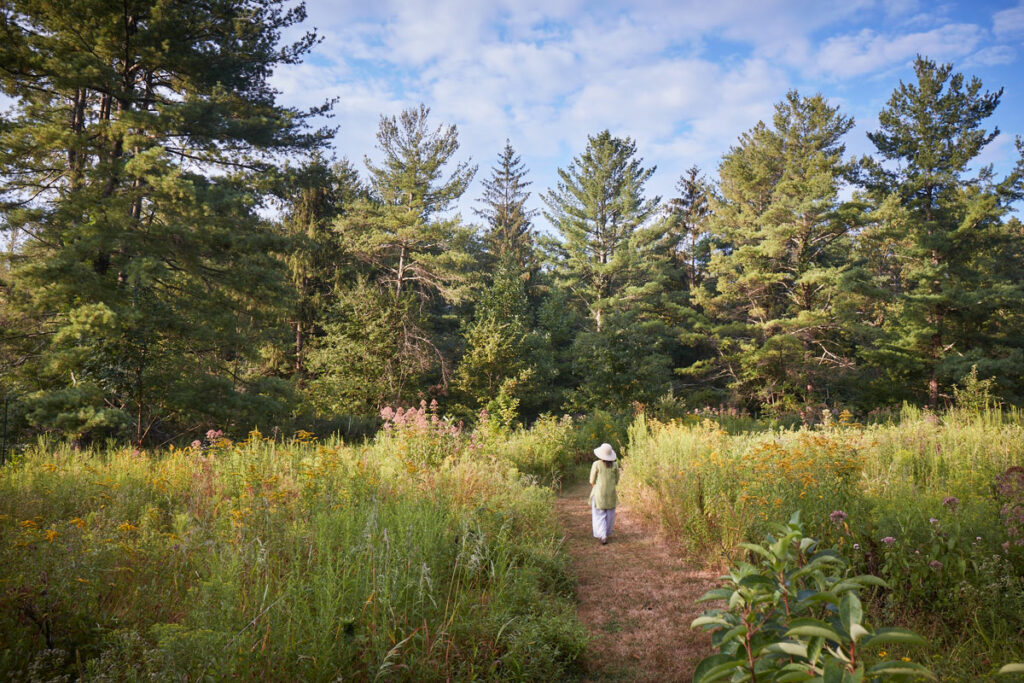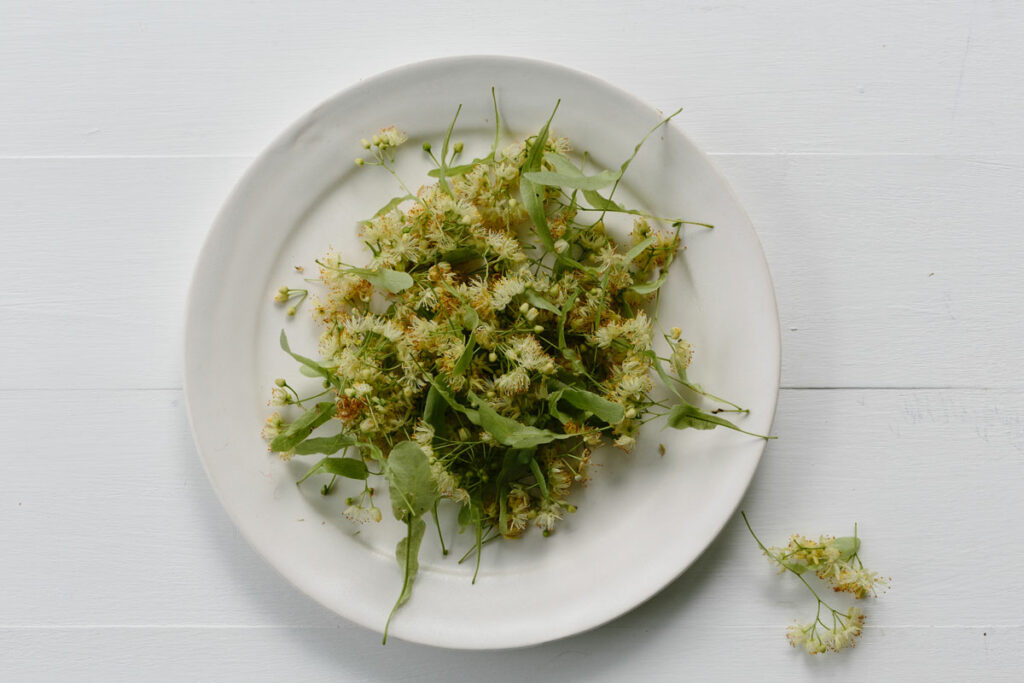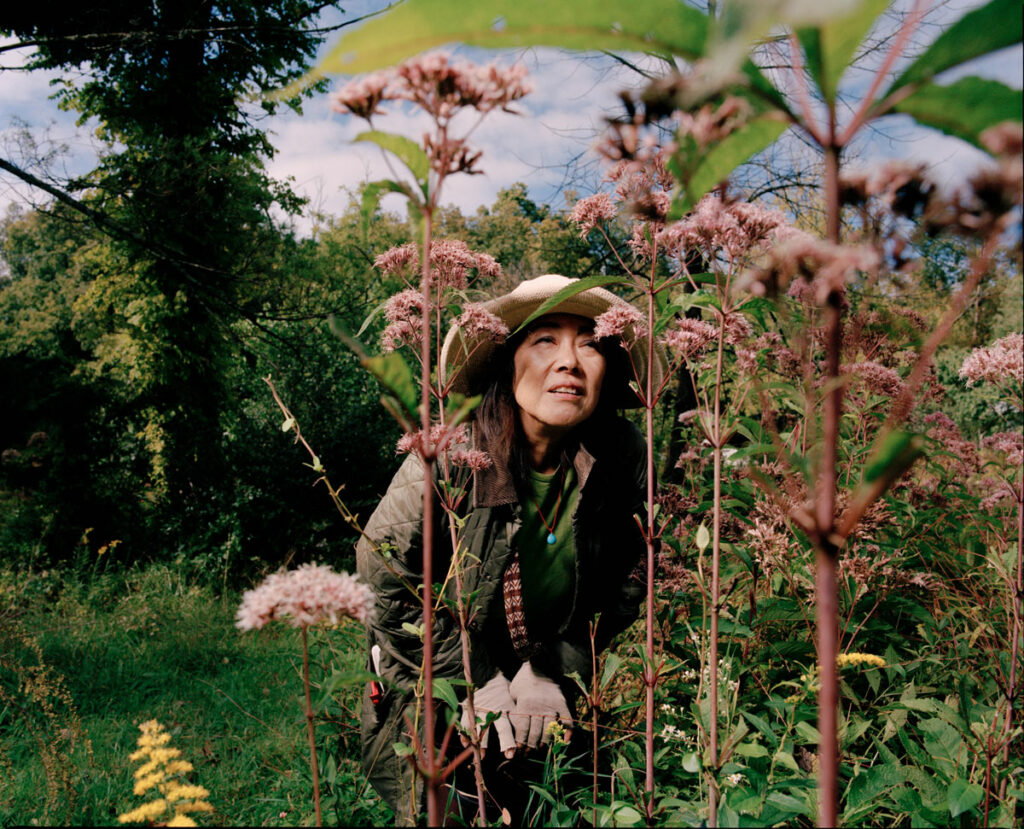Daniel Boulud’s Daniel—a bastion of fine dining—isn’t especially known for its weeds. But that’s exactly what was included recently, and quite proudly, alongside Maine sea scallops on its menu. In the process of adding more foraged wild ingredients to their fare, chefs say they’re discovering a whole new array of flavors, textures, and inspiration.
The key, says Eddy Leroux, Daniel’s executive chef and culinary director, is finding a forager you can trust. Leroux, like many other elite chefs, looks to Tama Matsuoka Wong.
“I’ve been working with Tama for well over a decade,” Leroux says. “Now she comes in once or twice a week with large deliveries of everything she finds. I respect and follow all of her guidance.”
It’s not just a point of pride, having the freshest, rarest, furthest-from-factory-farmed greens; it’s about making better food, and food that’s better for us.

For about 12,000 years, humans have not needed to forage for nuts and berries in forests and fields. But studies show that foraged food and wild edibles provide us with broader, higher-quality, and more nutritious foods, a badly needed departure from the typical sugar-laden and ultra-processed U.S. diet. In elevating foraged food, chefs like Leroux are helping us understand and celebrate the diversity and healthful abundance that can be brought to the table.
“Foraged ramp leaves, wild mint, wild garlic, nettles, violets, chickweed, and milkweed are some of my favorites in the spring, and they last so much longer than anything farmed,” Leroux says. “Wong forages dozens of wild plants for me, and they bring so much beauty and flavor to the menu.” Leroux appreciates Wong’s dedication to sustainability, saying that she never brings in an entire ramp plant, but instead gives him just the leaves, to ensure that the plant will regrow and crop up next year.
A few recent savory and sweet dishes elevated by foraged plants at Daniel include a carrot medley with nettles subric, and Oishii strawberry, with pine needle creme legere, strawberry confiture, and caramelized arlette.

Unlike other foragers he has worked with, who may take “everything that looks good,” Wong’s approach in the field mirrors his in the kitchen. “She is precise and tedious in her work,” Leroux says. “She knows what I need. If I request a nettle of a certain size, she will deliver it exactly. But generally, I just take what she brings because I know it will be the best.”
Tama Matsuoka Wong grew up foraging with her mother in the U.S., but she never intended to make a career of it. “I spent 15 years in Asia working as an international securities lawyer,” she says, laughing. “When I returned to the U.S., I was struck with the abundance, the land, the incredible resources here. I happened to meet a few naturalists around my home in New Jersey, and they told me about the prevalence of invasive wild plants.”
Wong slowly reignited her childhood habit of foraging with her newfound appreciation for the sheer volume of 200+ wild edibles available for harvesting around her New York and New Jersey stomping grounds.
“It really was just a very time-consuming hobby,” she says. “But then Eddy [Leroux] and I met, and he told me he’d pay me if I brought him my foraged plants. It was really a series of fortuitous events, but now I couldn’t imagine not doing it.”
Her business, Meadows and More, was born. Today, it serves approximately 15 top chefs, and provides seasonal edibles to the grocery delivery service Fresh Direct and restaurant supplier Baldor Specialty Foods.
When it comes to the foraging itself, Wong works alone. Her approach is simple, but meticulous. The 5-foot-tall Wong spends upwards of eight hours a day foraging during the high season, from early spring to late fall, and she doesn’t have fancy or complicated equipment. The size of her haul depends on the season’s vagaries. Even in the winter, Wong stays busy, harvesting pine, hickory bark, and juniper.
“I forage across New York and New Jersey, within about 100 miles,” she says. “I always try to respect each season, and what it’s bringing. I never want to put too much strain on one plant, or one area, because that would defeat the point.”

Respecting the earth and taking only what is bountiful is foundational to Wong’s philosophical paradigm and actual work. Prized for her chickweed, wild garlic, dandelion, hairy bittercress, and henbit, Wong’s personal favorites include harvesting the leaves of nettle and garlic mustard—invasive plants that choke out indigenous ones. “The government spends billions getting rid of invasive plants,” Wong says. “And a lot of them are delicious and full of nutrients!”
She focuses her foraging on private land. That way, she can ensure the plants come from land that has never been sprayed with pesticides or other chemicals.
“I am indirectly serving food to the public, and I take that very seriously,” Wong says.
Daniel is just one of many at the height of fine-dining serviced by Wong. She’s also the secret weapon of Michelin-starred Aquavit. Growing up, Aquavit’s executive chef Emma Bengtsson foraged for food regularly on the west coast of Sweden, making Wong’s visits a highlight since she first joined the restaurant a decade ago.
Wong’s wild gifts coincide with much of what Bengtsson aspires to do with food. “There is so much that nature has to offer us, that we don’t have to farm,” she says. “It’s actually much more sustainable if you forage responsibly like Tama. Agriculture requires so many inputs, it puts a drain on nature and increases all of our carbon footprints.”
This isn’t just a lesson for restaurants with stars and lusted-after tasting menus; it can just be the beef you braise at home with dandelion leaves. Creeping Jenny tips sautéed with spring peas. Honey spread on toast. Wong has collaborated on a recipe book (with Leroux), Foraged Flavor: Finding Fabulous Ingredients in Your Backyard or Farmer’s Market, with 88 recipes, that aims to bring the forest to the table.
When Wong brings Bengtsson a new edible, like bed straw or chickweed, the chef is also provided with an opportunity to test out its sweet and savory horizons, and use it as a tool to help educate her team of younger chefs. Bengtsson encourages them to explore the full range of flavors of these wild edibles, and consider them as potential main ingredients, not merely as an afterthought when plating a dish.
“There are so many layers to these plants and what they offer us,” Bengtsson says. “I am the type of chef who gets inspired by nature and shapes dishes around the foraged items, instead of the other way around.”
She’s not just blowing pollen. Bengtsson recently built an entire lamb dish around nettles and ramps. “Lambs graze in the areas where the plants grow,” Bengtsson says. “The flavors work. We’re going to grill lamb ribs, then blanch the nettles and ramp leaves and turn them into a purée, with a little pickled ramp to add a kick.”
She considers what other intrepid ingredients might complete this epicurean circle. “We’ll sprinkle the dish with foraged flowers, and maybe a few other items,” she says. “Depending on what [Wong] brings in.”
Giving Bees Some Much-Needed Buzz
IF YOU ATE TODAY, THANK A BEE
Bees are the O.G. foragers of the world. Along with butterflies, bats, and hummingbirds, they pollinate 90% of the world’s wild flowering species, 75% of the globe’s food crops, and 35% of the planet’s agricultural land. Every day they gather nectar, pollen, and water for their colony, and in the process transfer pollen between flowers, and ensure fruit and vegetable fertilization and production. Without healthy bee populations, global food security would be endangered, and the U.S. economy would need to find another source for the $17 billion their work contributes.
“I’ve always believed in sustainability, and I’ve worked for decades to make environmentally responsible menu choices and educate people on some of
the challenges we’re facing,” says chef and entrepreneur Richard Sandoval, whose eponymous hospitality company boasts 60+ restaurants across four continents and 12 countries, including Maya and tán in New York City. “During COVID, I began reading about bees and the challenges they’re facing, and I became alarmed.”
As Sandoval notes, bees are responsible for about one out of every three bites of food we take, and habitat loss and the use of pesticides and herbicides in agriculture have severely curtailed their populations in recent years. In January of this year, beekeepers began reporting large-scale honey-bee losses, with hobbyists noting a 51% loss of colonies, and that number rising to 62% amongst commercial beekeepers.
Sandoval adopted a three-pronged approach to combating what he increasingly sees as a crisis: He wrote a children’s book, Viva Abejas: Help Save the Bees, “because I believe that educating children about the importance of bees is key if we want to save them,” says Sandoval, who does readings at Boys & Girls Clubs and cooks with the kids. “I’ve been really surprised to see how engaged and passionate the children become once they understand how interesting bees and their lives are, and what’s at stake.” The proceeds from the book go to The World Bee Project, which aims to restore declining pollinator populations. Sandoval also began working with honey producers in regions near his restaurants, and has created menus around bees as part of a global initiative at his dining spaces, called Viva Abejas.



